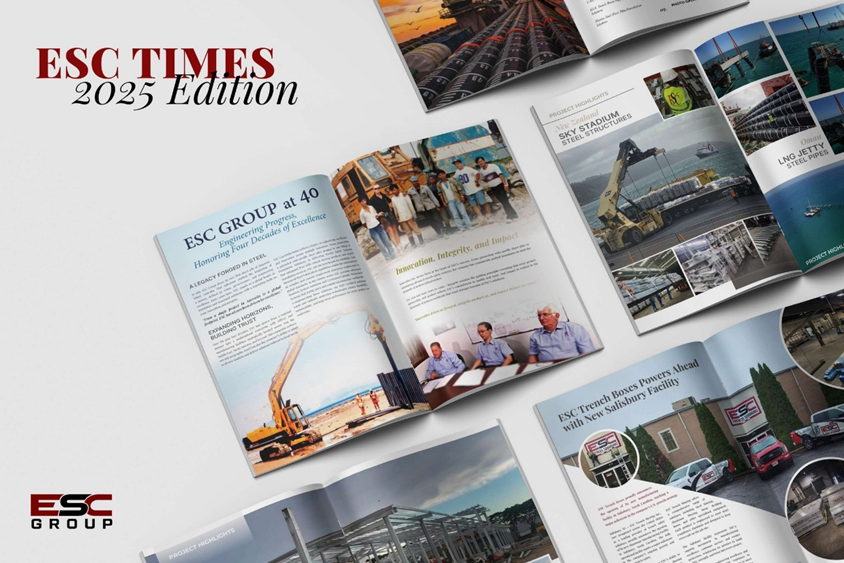What is an OSHA-compliant Trench Box System?
- Nov 26, 2020
- 3 min read
Updated: Aug 27, 2021
Shield or sometimes referred to as “trench box” or “trench shield” prevents workers from being trapped inside a trench or excavation in event of cave-ins. They also protect workers from any material falling apart from excavation faces and from possible collapse of adjacent structures. Shield is recommended by the Occupational Safety and Health Administration (OSHA) as a Trench and Excavation Protective System besides Sloping/Benching and Shoring Solutions. Trench Boxes, from OSHA’s stand point, are characterized as follows.
DESIGN AND MANUFACTURE
According to OSHA Standard 1926.650, shields can be either pre-manufactured or job-built in accordance with 1926.652(c)(3) or (c)(4).
(C) (3)-Designs using other tabulated data. Tabulated Data are tables and charts approved by a registered professional engineer and used to design and construct a protective system.
(C) (4)-Design by a Registered Professional Engineer (RPE). Designs shall be in written form and shall include: A plan indicating the sizes, types, and configurations of the materials to be used in the protective system; and the identity of the RPE approving the design.
MATERIALS AND EQUIPMENT
Under OSHA Standard 1926.652(d), materials and equipment used shall be free from damage or defects that might impair their proper function. They shall be used and maintained consistently with manufacturer recommendations, and in a way that will prevent employee exposure to hazards. When damaged, a competent person shall examine the material or equipment and evaluate its suitability for continued use. If the competent person cannot assure its ability to support the intended loads or is otherwise unsafe to use, such material or equipment shall be removed from service. It will be evaluated and approved by a registered professional engineer before being returned to service.
LIMITS OF APPLICATION
Trenches 5 feet (1.52 m) deep or greater require a shield unless the excavation is made entirely in stable rock. If less than 5 feet deep, a competent person may determine that a protection not required. (OSHA 1926.652(a)(1)(I & ii)).
Trenches 20 feet (6.1 meters) deep or greater require that the shield is designed by an RPE or be based on tabulated data prepared and/or approved by an RPE in accordance with 1926.652(c).
A trench box can be combined with other protective systems, such as sloping and benching. In this scenario, the trench box must extend 18 inches above the vertical part of the excavation walls. If the top of the trench box is at ground level, trench box does not have to extend above grade.
Photo Credit: OSHA Technical Manual Section V: Chapter 2
INSTALLATION AND RETRIEVAL
Conditions provided in OSHA 1926.652(g) are summarized as below:
Shield systems shall not be subjected to loads exceeding those which the system was designed to withstand.
Shields shall be installed in a manner to restrict lateral or other hazardous movement of the shield in the event of the application of sudden lateral loads. The space between the excavation sides and the trench box should be minimized or backfilled in any circumstance.
Employees shall be protected from the hazard of cave-ins when entering or exiting the areas protected by shields. A stairway, ladder, ramp or other safe means of egress shall be located in trench excavations that are 4 feet (1.22 m) or more in depth so as to require no more than 25 feet (7.62 m) of lateral travel for employees.
Employees shall not be allowed in shields when shields are being installed, removed, or moved vertically.
The maximum distance between the bottom of the shield and the bottom of the trench should be 2 feet (0.61m). Excavation of not more than 2 feet below the bottom of a shield is allowed, only if the shield is designed to resist the forces calculated for the full depth of the trench. Also only if there are no indications of loss of soil from behind or below the bottom of the shield.
To facilitate proper stacking in deep excavations, a design or system should be used to prevent the boxes from being misplaced or misused in the excavation when boxes of different ratings are employed. Boxes can be designed in a manner that they will fit together only one correct way, or using a marking system that readily identifies the maximum depth each individual box can be placed.
Photo Credit: OSHA Technical Manual Section V: Chapter 2



In need of Professional Assistance for your Excavation and Trenching Projects? Contact ESC Group Please visit us at: www.esctrenchsafety.com email: escglobal@escpile.com












